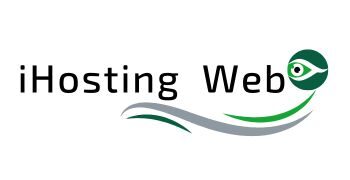Be honest: does your website feel like it could belong to almost any company in your industry, with only your logo swapped in at the top? I hear this all the time from small to medium-sized business owners who chose a quick template to “get something live,” only to discover later that the site doesn’t convert, doesn’t rank, and definitely doesn’t scale. That’s exactly where a web partner becomes a growth multiplier, because the point isn’t just to have a site — it’s to have a customer-acquisition machine. At iHosting Web, LLC, we’ve seen that when design, branding, marketing strategy, and infrastructure work together, your web presence stops being a brochure and starts being a 24/7 sales engine. And yes, that shift is possible without burning everything down; it starts by replacing one-size-fits-none choices with purposeful, custom strategy tied to your goals.

The Hidden Cost of Cookie-Cutter Websites
Templates seem cheap until you total the missed opportunities they quietly rack up. A generic layout may ignore your positioning, bury your unique value proposition, and force you into rigid sections that do not match how your buyers actually decide. Worse, many lookalike themes are bloated, slow, and poorly structured for SEO (Search Engine Optimization), so even great content struggles to rank. If the navigation feels like a scavenger hunt and the copy reads like everyone else’s, visitors bounce before they trust you. Over months, that erosion compounds: fewer leads, higher acquisition costs, and less data to learn from. When a site cannot flex with your campaigns and products, your team ends up duct-taping tools together or abandoning ideas because the template cannot support them. That is not just inconvenient — it is expensive, because every blocked experiment is potential revenue left on the table.
- High bounce rates on core pages and poor conversion on forms and checkouts
- Slow load times on mobile, especially on image-heavy sections
- Inflexible layouts that break when you add new services or seasonal campaigns
- Generic copy and stock visuals that blur your brand into the crowd
- Fragmented data across plugins with no unified KPI (Key Performance Indicator) view
Just as frustrating, cookie-cutter sites rarely connect cleanly with the rest of your stack, with other business systems and ad platforms. That means your team spends hours babysitting plugins, reconciling reports, and chasing errors rather than improving offers and content. Meanwhile, competitors with custom, conversion-first experiences keep testing headlines, streamlining funnels, and building authority. Study after study points to the same pattern: faster pages, clearer value propositions, and relevant personalization correlate with more qualified leads and higher lifetime value. So the “cheap and easy” option often becomes the most expensive route when you measure the full cost of delayed growth, tech debt, and opportunity loss. Fortunately, there is a practical way to reverse the drift — build a custom foundation that fits your buyers and your roadmap.
| Dimension | Cookie-Cutter | Custom Approach |
|---|---|---|
| Brand Story | Generic sections; your message squeezed into preset blocks | Narrative flows built around your funnel and customer objections |
| SEO (Search Engine Optimization) | Bloated code, weak schema, duplicated layouts | Lean markup, structured data, content mapped to search intent |
| Speed and Hosting | Shared hosting bottlenecks, heavy scripts | High-speed cloud or dedicated hosting tuned to your stack |
| AI-Powered Marketing | One-size-fits-all campaigns and limited targeting | Dynamic targeting, campaign optimization, and conversion-focused landing pages |
| Data and KPIs (Key Performance Indicators) | Plugin reports that do not reconcile | Unified dashboards tied to business outcomes |
| Security & Maintenance | Infrequent updates and risky third-party code | Managed hardening, backups, and site maintenance plans |
Why Custom Strategy Wins: Data, Brand, and Experience

Watch This Helpful Video
To help you better understand digital marketing agency, we’ve included this informative video from Adam Erhart. It provides valuable insights and visual demonstrations that complement the written content.
Custom beats cookie-cutter because it aligns every pixel and paragraph with how your buyers think and act. Instead of retrofitting your offers into a template, you reverse the process: research your audience, map journeys, then design the experience around those paths. Industry benchmarks regularly show that mobile-first sites that load quickly and speak in the buyer’s language drive more qualified traffic and better conversion. Multiple reports over the last few years indicate that most web traffic is mobile and that even small speed gains can lift engagement and sales, which is why performance budgets and content priorities matter. When your content strategy, page structure, and internal linking are built around intent, you make it easier for search engines to understand you and for humans to trust you — that is how SEO (Search Engine Optimization) and brand storytelling reinforce each other instead of competing for space.
There is also a valuable ripple effect: better UX (User Experience) and UI (User Interface) reduce friction, which lowers customer support volume and increases repeat purchases. When your forms ask only what is essential, your copy anticipates objections, and your testimonials sit exactly where anxieties spike, people glide instead of grind. Personalized sections pull in the right proof at the right moment, and your navigation highlights the next best step for each visitor segment. Meanwhile, your analytics track the real signals — not vanity metrics — so you can prioritize changes that move revenue. The net effect is momentum: a site that gets smarter every month, content that compounds, and campaigns that add up to a durable advantage. That is what a strategic partner builds — not pages, but systems that make progress predictable.
How a Website Partner Builds Beyond the Template
A great partner does not start with a theme; they start with discovery. At iHosting Web, LLC, we align goals, audience insights, and benchmarks before we write a line of code or pick a color. Then we assemble the pieces that make growth happen: Custom Website Design that tells your story clearly, Website Development that integrates your tools without duct tape, Digital Marketing that attracts and nurtures demand, and High-speed Cloud and Dedicated Hosting that keeps everything fast and safe. For commerce-led brands, we support merchandising logic, flexible promotions, and conversion-optimized product pages through our design and marketing approach, while our Site Maintenance Plans keep your platform healthy and secure. The result is a calm, coordinated system where SEO (Search Engine Optimization), PPC (Pay-Per-Click), content, and email work together — not a pile of plugins competing for attention. And because we build around your roadmap, you can add products, services, and campaigns without redesigning from scratch.
Let me illustrate with a common scenario we see. A regional retailer launches with a template and a few ad campaigns, but growth plateaus as acquisition costs climb. After a custom rebuild that streamlines navigation, clarifies messaging, and improves page speed, engagement rises and the checkout friction falls. With structured content mapped to search intent, organic traffic expands steadily; meanwhile, smarter PPC (Pay-Per-Click) targeting and landing pages tighten return on ad spend. Over the next quarters, the team adds a subscription offer and bundles supported by the platform, marketing automation nurtures repeat purchases, and the analytics finally tell one coherent story. No silver bullets — just a system that compounds. That is the difference a custom plan delivers when the pieces are designed to work as one.
| Offering | What It Includes | Business Impact |
|---|---|---|
| Custom Website Design | Brand discovery, messaging, conversion-focused layouts | Clear value proposition, higher trust, more qualified leads |
| Website Development | Clean code, integrations, accessibility, performance budgets | Scalable features, faster iterations, fewer tech headaches |
| Digital Marketing | SEO (Search Engine Optimization), PPC (Pay-Per-Click), content, email | Efficient acquisition, compounding organic reach, better ROI (Return on Investment) |
| High-speed Cloud and Dedicated Hosting | Server tuning, CDN (Content Delivery Network), caching, monitoring | Improved speed, uptime, and security for consistent revenue |
| AI-Powered Ads & Lead Gen | Campaign optimization, dynamic creative, lead capture and nurturing | Higher lead quality, better conversion rates, and improved ROI |
| Site Maintenance Plans | Updates, backups, hardening, uptime and performance checks | Reduced risk, stable platform, predictable operations |
Technical Foundations That Multiply Your Results

Speed, stability, and security are not just developer preferences — they are revenue levers. When your server, code, and media are tuned together, pages feel instant and your bounce rate drops, especially on mobile connections. At iHosting Web, LLC, we pair High-speed Cloud and Dedicated Hosting with smart front-end choices: optimized images, modern asset loading, and caching strategies aligned to your content. Add a CDN (Content Delivery Network), database indexing, and automatic scaling, and you have a site that stays quick during traffic spikes. Security matters as much: hardened servers, SSL (Secure Sockets Layer) everywhere, least-privilege access, and dependable backups protect your reputation and your customers. Finally, structured data and clean information architecture help search engines understand your content — a technical backbone that supports every campaign you run and every page you publish.
- Adopt a performance budget and audit third-party scripts quarterly.
- Serve next-gen images and compress media without sacrificing clarity.
- Use schema markup to reinforce products, services, FAQs (Frequently Asked Questions), and reviews.
- Implement uptime monitoring and alerting to catch issues before customers do.
- Schedule maintenance windows and document release cycles to prevent surprises.
From Clicks to Customers: Measurement, Iteration, and Growth
The magic is not launching — it is learning. A growth-ready site turns every visit into insight, so you can measure what matters and iterate with confidence. That starts with a clear analytics model: events and goals that mirror your funnel, source tagging that attributes leads accurately, and dashboards that visualize KPIs (Key Performance Indicators) your team can act on. With that clarity, you can test messaging on landing pages, adjust PPC (Pay-Per-Click) bids toward high-intent segments, and ship content that wins featured snippets — all while watching the downstream effects on pipeline and revenue. The best part is how this compounds over time: each month’s improvements stack on last month’s gains, your search visibility strengthens, and your cost per acquisition becomes more predictable. In other words, growth shifts from guesswork to process, and your site finally earns its keep as a primary channel, not a passive brochure.
- Define your north-star metrics and supporting KPIs (Key Performance Indicators).
- Set up clean source and campaign tagging — then enforce it.
- Prioritize tests with the highest expected impact and fastest learning cycles.
- Review insights monthly, ship improvements, and document what you learned.
- Revisit strategy quarterly to reallocate budget toward winners.
| Phase | Focus | Primary KPI (Key Performance Indicator) |
|---|---|---|
| Days 1-30 | Speed, tracking audit, message clarity | Bounce rate, form submissions, core web vitals |
| Days 31-60 | SEO (Search Engine Optimization) content and internal linking | Organic sessions, rankings for bottom-funnel terms |
| Days 61-90 | PPC (Pay-Per-Click) and landing page experiments | Cost per lead, conversion rate, pipeline created |
Here is the heart of it: generic websites cap your potential, while a custom, strategy-led build turns your site into a reliable growth engine.
Imagine the next 12 months with a faster site, clearer story, and campaigns that feed a single source of truth so every decision gets sharper.
What would change for your team if your website consistently generated qualified leads — and your website partner kept compounding those wins?
Ignite Growth with iHosting Web, LLC
Power small to medium-sized business growth with Digital Marketing and a full-service, customized presence—design, branding, hosting, and AI-powered marketing—built for long-term revenue.
